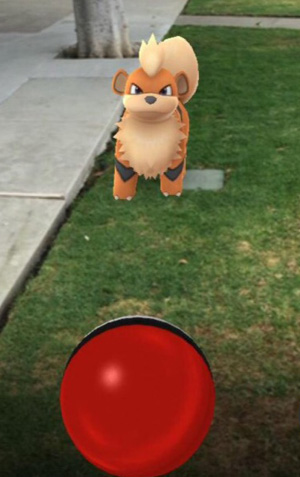Pokémon: Reinventing the Category
- Published: July 21, 2016, By Stephanie Millman
The strangest thing happened last week. I started seeing kids and young adults walking around in odd places staring at the phones in their hands. They'd take a few steps, stop, turn, take a few steps, stop, and then aggressively work their smartphone screens. I approached a man in his late 20s doing this under the church bell tower in our community. He told me that he's a gamer and this new game, “Pokémon Go,” has reinvented gaming for him by taking it outside. Basically, the smartphone uses the GPS and camera features to enable users to capture Pokémon characters while they have the real-world experience of walking around. He had already walked over 5 miles that day alone. He joked that it was Nintendo's way of fighting obesity! I understand that these Pokémon characters can be found practically everywhere. . . in the country, city, desert, mountains. . . just not in space.
 Hats off to Nintendo. This is the second time the Japanese company has turned the gaming category on its head. Do you remember how they did that with the Wii? They took video gaming concepts and connected physical movement (Wii board and wearable remotes to communicate with a sensor) to real-time, real-life activity. For a long time, retailers had a hard time keeping Wii products in stock because of demand. Nintendo changed the gaming category by developing and owning an extension of it. This is much like how Apple's iPhone changed the "cellphone" category by creating a “smartphone” one. But these changes don't come overnight. In fact, the iPhone took nine years to launch, the Wii over three years, and “Pokémon Go” was launched off a different 4-year old augmented-reality game that then took over a year to overlay the Pokémon theme.
Hats off to Nintendo. This is the second time the Japanese company has turned the gaming category on its head. Do you remember how they did that with the Wii? They took video gaming concepts and connected physical movement (Wii board and wearable remotes to communicate with a sensor) to real-time, real-life activity. For a long time, retailers had a hard time keeping Wii products in stock because of demand. Nintendo changed the gaming category by developing and owning an extension of it. This is much like how Apple's iPhone changed the "cellphone" category by creating a “smartphone” one. But these changes don't come overnight. In fact, the iPhone took nine years to launch, the Wii over three years, and “Pokémon Go” was launched off a different 4-year old augmented-reality game that then took over a year to overlay the Pokémon theme.
The point I'm making is that innovation takes dedication, time, and money. Most companies I’ve worked with consider innovation as injecting new and improved features into existing product frames. This is what we call “incremental innovation” but we all know that to find true innovation, you must watch how your customers accomplish something and then rethink your offering considering their behaviors and the technology available to you.
Henry Ford said, “If I had asked people what they wanted, they would have said faster horses.” Only a few companies I've been involved with have had a dedicated effort (people, time, and money) toward "Voice of Customer" (VOC), market, or behavior research. But those that do have made big inroads in their market share. A commitment to a VOC program is a long-term strategy that must be championed by the leaders in the company.
It’s rare for executives to take on long-term projects like this when they have the pressures of quarterly earnings. But like Henry Ford suggests, you need to watch what your customers are trying to accomplish and marry that with technology. If you had asked the "Pokémon Go” player I met under the bell tower what he wanted to see in a game, I can bet he would have never envisioned what he’s experiencing now. I challenge you to take steps toward true innovation… Challenge your executive team to establish a multi-year budget line item with a dedicated leader, subscribe to our “Innovation Station” blog, make time to consistently read examples from world-class organizations, and get your business dedicated toward launching something that will change the category.




